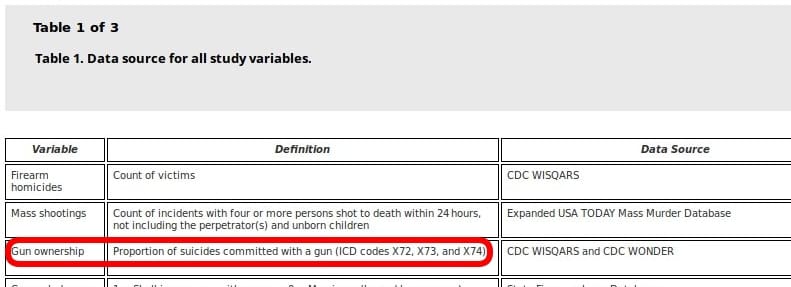Fun With Data: More ‘Research’ Blames Mass Shootings On Those Who Didn’t Do It
It’s time to play “spot the lousy gun research” again! There’s yet a new “study” out that purports to link high rates of firearm ownership to higher rates of mass shootings. It’s economically entitled Comparing the Impact of Household Gun Ownership and Concealed Carry Legislation on the Frequency of Mass Shootings and Firearms Homicide, by Emma E. Fridel.
I had to read this paper because the pseudo-news reports included a remarkable factoid.
In order to address these challenges, a unique dataset of all mass murders in the United States from 1991 to 2016 was created. …
To date, this represents the most comprehensive and accurate database available on mass shooting incidents in the United States, with a total sample size of 592 mass shootings during the study period.
Five hundred, ninety-two mass shootings? Gun Facts only found 94 from 1982 to 2019. The Violence Project lists 174 from 1966 to 2020. The Rockefeller Institute of Government identified 318 from 1966 to 2017.
Where did Fridel find hundreds more than any other researcher over a shorter time frame? The devil is in the definitions.
Rockefeller’s Capellan and Jiao defined “mass public shooting” as “the killing of four or more individuals in one or more closely related locations within a 24-hour period.” That’s representative of the definition usually used. It excludes targeted killings like gangbangers fighting over turf, or domestic disputes gone massively wrong.
It excludes serial shootings that don’t occur in a single incident. Fridel went with something a little different.
Defined as the killing of four or more individuals (excluding the offender) with a firearm within 24 hours… …
As WISQARS does not provide linkage information, firearms homicide was measured as a count of victims rather than incidents.
Four or more within 24 hours.
No gang or family exclusions. It doesn’t even necessarily specify that the four victims be shot for related reasons or even by the same shooter.
I’m sure she dinked around with that highly questionable definition until she got one that generated clusters in all the wrong states. Since she’s using WISQARS in part, I’m not even sure the “mass shooting” victims had to be in the same city or state, just the same 24 hour period.
Then I hit this.

Household gun ownership was measured using a common proxy, the proportion of suicides committed with a firearm.
“Gun ownership” is estimated from suicides by firearm. Never mind that a goodly percentage of suicides are committed with firearms not owned by the subject. Never mind that better proxies, such as firearm hunting licenses, concealed carry licenses or in states like Illinois and Massachusetts, firearm owner licenses, exist.
Fridel gets to generate bogus data and reinforce the gun-ownership-equals-suicide canard, a twofer.
I should have quit there, but I was gripped by morbid curiosity.
She controlled her data for various socioeconomic and demographic factors. She included firearm homicide rates. But she specifically excluded non-firearm homicides, and violent crimes and property crimes.
It turns out she had per capita hunting license data, but decided not to use it; she just threw it out.
What this really is, then, is a study in how to manipulate and misuse data to further an agenda. Fridel could probably teach Garen Wintemute a few new tricks. Her data is so bad she probably wears an isolation suit to massage it.

